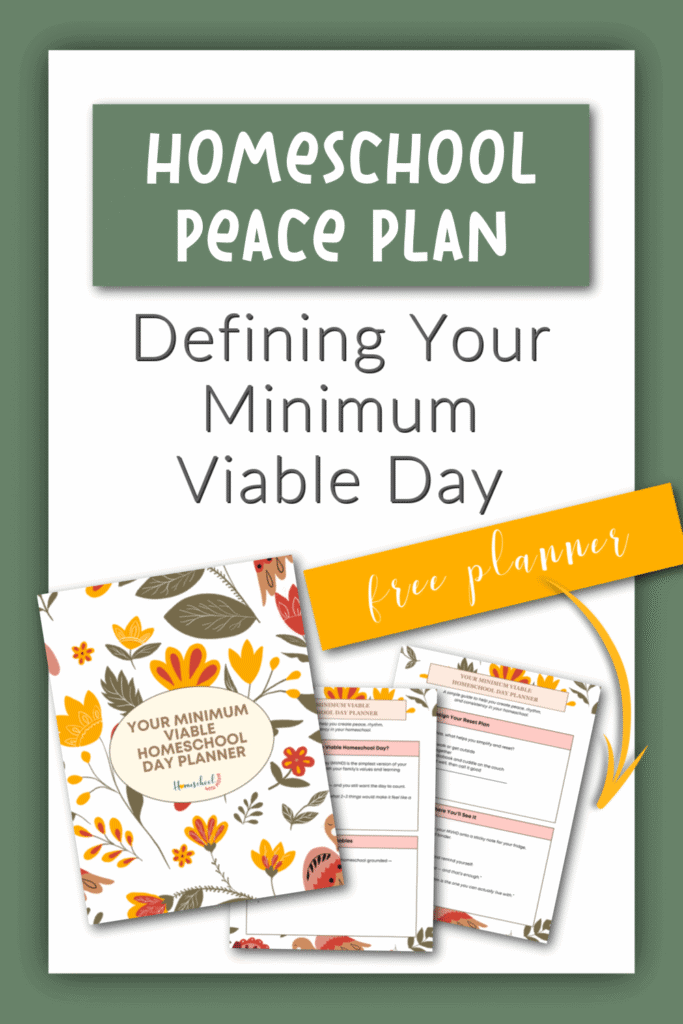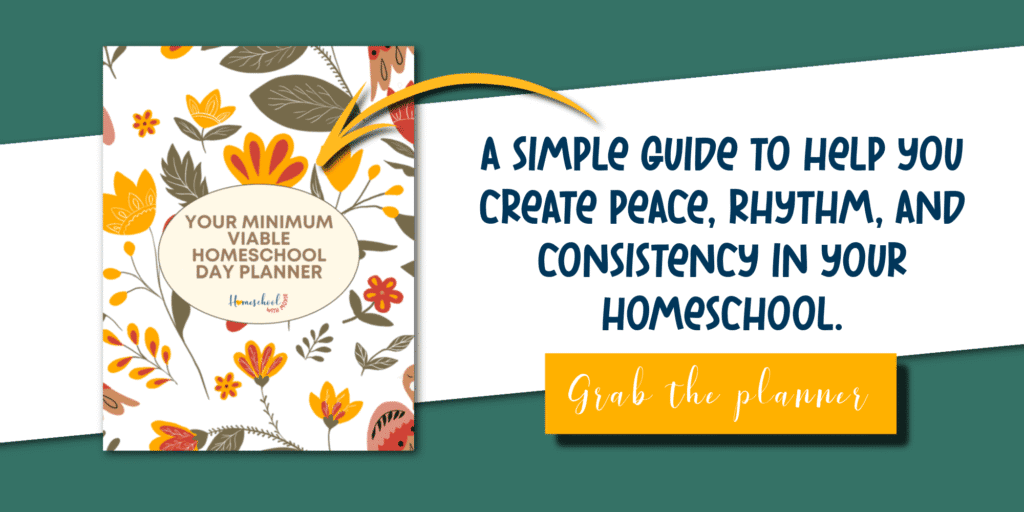Some days, homeschooling feels effortless — the lessons flow, the kids are engaged, and you end the day with that rare feeling of we actually did it.
And then there are the other days. The ones where everyone’s tired, the plans fall apart, and you wonder if you’re failing at this whole homeschooling thing.
Here’s the truth: you’re not failing — you just need a Minimum Viable Homeschool Day.
A Minimum Viable Homeschool Day is the simplest version of your homeschool routine that still moves learning forward. It’s your grace plan — the fallback rhythm that keeps things steady when life gets messy. Instead of trying to do it all, you focus on what truly matters: connection, consistency, and calm.
In this episode, we’re talking about how to define your own Minimum Viable Homeschool Day, why it’s essential for sustainable homeschooling, and what it can look like for your family. Whether you’re deep in burnout or just craving more peace in your days, this simple mindset shift can change the way you homeschool — and how you feel about it.

What’s a Minimum Viable Homeschool Day?
A Minimum Viable Homeschool Day (MVHD) is the simplest version of your homeschool routine that still moves learning forward and aligns with your family’s values. The idea comes from the business world — where a “minimum viable product” means the smallest version that still works. In homeschooling, that means letting go of the pressure to “do it all” and focusing on the core pieces that truly matter. It’s your grace plan — the day that counts even when life gets messy, routines fall apart, or energy is low.
Your MVHD might look different from someone else’s, and that’s the point. It’s deeply personal and flexible. For some families, it’s reading aloud and doing a short math activity. For others, it’s journaling, one focused lesson, and a walk outside. The goal is to protect the heart of your homeschool — not fill every box on the checklist.
Listen to episode 334 of the Homeschool with Moxie Podcast below!
Why It’s Important (and How It Can Change Everything)
The beauty of defining your Minimum Viable Homeschool Day is that it brings consistency, peace, and sustainability into your homeschool life. We all have hard days — sick days, busy weeks, seasons of burnout — and having a simplified plan means you can still show up without losing momentum or joy. Instead of feeling like you’ve “failed” when things don’t go perfectly, you’ll know you’ve done the essentials, and that’s enough.
This approach helps prevent burnout for both parents and kids by prioritizing connection over completion. It also teaches your children that learning happens in many ways — not just through structured lessons, but through conversation, curiosity, and daily life. When your homeschool rhythm is simple enough to live with, it becomes sustainable for the long run.
What a Minimum Viable Homeschool Day Looks Like
Every family’s Minimum Viable Homeschool Day will look a little different, but it usually centers around two or three non-negotiables — the activities that keep your homeschool grounded. For younger kids, it might be reading aloud, one short math game, and time outdoors. For teens, maybe it’s independent reading, one skill-based subject like math or writing, and journaling. You don’t need a long checklist to make the day meaningful.
The key is to focus on connection, not completion. Ask yourself, “If we did nothing else today, what few things would make it feel like a good day?” Write those down — that’s your MVHD. On busy or overwhelming days, you can return to this simple framework and know that learning is still happening in a calm, sustainable way.
How To Create Your Own Minimum Viable Homeschool Day
Start by identifying your non-negotiables — the two or three things that make your homeschool day feel complete. Maybe it’s reading together, practicing math, and talking about something you learned. Write them down and post your list where you can see it — on the fridge, a whiteboard, or inside your planner. These are your “anchors” that keep your day steady even when everything else feels chaotic.
Next, create a simple reset plan. When a hard day hits, look at your MVHD list and remind yourself that you don’t need to do everything — just the essentials. This small shift takes you from overwhelmed to confident. Over time, you’ll find that simple consistency creates more growth (and joy!) than perfectly planned days ever could.
When To Use Your Minimum Viable Day
Think of your Minimum Viable Day as your homeschool’s safety net — there for you whenever life happens. Use it on sick days, travel days, post-holiday weeks, or whenever burnout is creeping in. It’s not a “lazy day” or a fallback plan — it’s a sustainability tool that helps you preserve your energy and keep homeschooling enjoyable.
By giving yourself permission to simplify, you model flexibility and resilience for your kids. They learn that learning doesn’t stop when plans change — it simply adapts. And when you treat simple days as valid and valuable, you remove guilt and replace it with peace.
How To Let This Idea Change Your Homeschool
Homeschooling isn’t about doing everything — it’s about doing what matters most, consistently and with love. Your Minimum Viable Homeschool Day gives you the freedom to rest, reset, and still feel successful. Remember, simple days still count.
If you’re ready to define your own Minimum Viable Homeschool Day, grab the free printable planner below and start today.

Leave a Reply